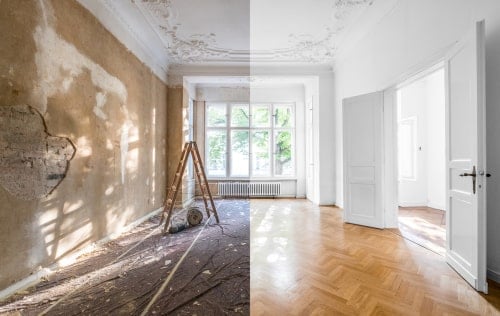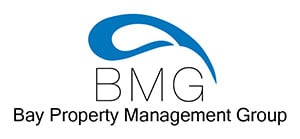
The use of lead-based paint in residential housing has been illegal since 1978. Then, in 1992, federal and state governments created laws that aim to protect tenants against the potential health risks of lead paint. This is known as The Residential Lead-Based Paint Hazard Act. That said, enacting lead paint laws does not mean it is eradicated from all housing. In fact, homes built before 1978 are likely to contain some level of lead paint hazard. According to HUD, around 35% of US housing contains at least some lead-based paint.
Over the past decade, lawsuits stemming from lead paint exposure are on the rise. As a landlord, the law does not require the removal of lead-based paint, but you do have responsibilities. Join us below as we discuss important landlord responsibilities when it comes to lead paint laws.
Is Lead Paint Really Dangerous?
Yes! The problem is that, over time, lead paint does not retain its integrity. Instead, it begins to break down, chip, and peel, which then disintegrates to dust. It is this dust that presents the biggest health hazard to tenants or any occupant of the property. If this dust is inhaled or ingested in any way, the lead is quickly absorbed into the lungs, skin, or blood. Children are at particularly high risk. Over time, this increased exposure can lead to lead poisoning and devastating health effects such as –
- Memory Loss
- Body Aches
- Headaches
- Digestive Issues
- Kidney Damage
- Nerve Damage
- Birth Defects to Unborn Children
- Learning Disabilities
- Attention Deficits
How Do I Know if My Rental Property has Lead Paint?
Lead paint is not always obvious to the naked eye. However, a few telltale signs, such as large chipping or peeling, can be a sign of trouble. According to the EPA, lead paint in homes built before 1978 is most commonly found in the following areas –
- Around Windows and Windowsills
- Exterior Trim
- Doors and Door Frames
- Stairs, Railings, Banisters, and Porches
When a visual inspection does not provide a definitive answer, there are other options. Landlords can reach out to a qualified vendor to perform a lead test. Knowing what you have in your rental property will help to better inform and safeguard future tenants. Additionally, this knowledge is critical to fully complying with federal and state disclosure requirements. Check out your testing options below.

Types of Lead-based Paint Testing
- Professional Visual Inspection – A qualified lead inspector can come to the property and perform a visual inspection. Their training allows them to pinpoint areas of concern where lead paint may exist throughout the property.
- Lead Hazard Screening – Lead hazard screening indicates the likelihood of a lead paint risk. Generally, it involves limited dust wipe samples and a visual inspection. However, if lead paint is present, the inspector may recommend further testing.
- Risk Assessment – Going more in-depth, a risk assessment helps find and discern the cause of deteriorating paint. Therefore, the inspector will evaluate the type, severity, and location of any lead-based hazards then offer suggestions to enhance safety.
Landlord Responsibilities Regarding Lead Paint Laws
Passed in the early ’90s, The Residential Lead-Based Paint Hazard Act set a standard for how landlords handle the presence of lead paint in a rental property. So, failing to comply with these lead paint laws could cost landlords significantly. In addition to the federal regulations, states and even local jurisdictions may have their own requirements to adhere to. Therefore, always review specific lead paint laws in your area before moving tenants into your rental. Let’s review what The Residential Lead-Based Paint Hazard Act requires of landlords below –
What the Residential Lead-Based Paint Hazard Act Requires
- Disclosure – Property owners must disclose to tenants any knowledge of lead-based paint or lead-based paint hazards in the home. Additionally, the owner should provide the location and current condition of the affected surface.
- Lead Records – If lead paint is present, landlords must make available any documentation, reports, or test results to the tenant. Furthermore, landlords should retain these records for a minimum of three years.
- Lease Attachments – Include an attachment or clause into the lease agreement that addresses the risk of lead paint presence. Also, all tenants and the landlord must date and sign this document or clause to affirm that the landlord complied with all notification requirements.
- Safety Information – Provide tenants with an EPA-approved Lead Paint information pamphlet. This extensive and informative packet helps tenants identify and control lead-based paint hazards.
How Detrimental are Lead Paint Lawsuits for Landlords?
In many states and cities across the nation, entire law firms devote their practice solely to lead-based paint claims. Over the years, residents in Baltimore alone have collected over $300 million in settlements over lead hazards. That said, these numbers could easily put even a professional property management firm out of business.

Evidence shows that adults can absorb around 11% of lead through the digestive tract. However, this number is exponentially higher in children, putting them more at risk for dangerous health effects. Tenants that suspect lead in a rental, were harmed, and who were not provided with the proper disclosures have grounds for a lawsuit. Thus, allowing them to sue the property owner for damages, including medical bills related to lead poisoning.
However, tenant lawsuits are not a landlord’s only concern. In fact, failing to comply with any lead paint laws could see owners facing HUD fines and even possible criminal charges. Furthermore, if the landlord knowingly ignored lead disclosure requirements, courts could award a tenant up to three times the amount of their damages. In addition, the landlord may also have to pay applicable court costs and attorneys’ fees for the tenants.
State Initiatives to Deal with Lead Paint Risks
In 2019, Virginia Governor Ralph Northam announced that Virginia received a HUD grant of $5.6 million to help protect families from lead-based paint hazards. This funding, facilitated by the Lead-Based Paint Hazard Reduction Program and Office of Lead Hazard Control and Healthy Homes, aims to support local efforts to eliminate dangerous lead paint from lower-income homes.
Plans for the funding include helping the state address lead hazards in 232 housing units. In turn, providing safer housing options for low- and very low-income families with children. Additionally, funds will allow Virginia to perform healthy home assessments in 81 units while working with other medical and social service providers.
As the issue of lead paint hazards and their known effects on health continue to be at the forefront of people’s minds, perhaps more states will mimic Virginia’s commitment to public awareness.
 Can a Landlord Remove Lead Paint?
Can a Landlord Remove Lead Paint?
The EPA reports that professional lead paint removal averages $8 to $15 per square foot. Well, for landlords, that could add up very quickly, potentially costing tens of thousands before complete. That said, attempting to remove lead paint on your own or renovate without the proper precautions is dangerous.
For instance, scraping or using a heat gun to remove toxic layers of paint can release dangerous dust or fumes. All of which can put you, your family, or your tenants at great risk. So, the EPA recommends hiring a professional and certified contractor to address the removal of any lead-based paint safely. If you do hire a professional, ensure they have the proper training and credentials below –
- The individual or firm has an EPA RRP certificate
- Contract states that all work is performed using lead-safe work practices
- Ensure testing is performed once the project is complete to verify no hazardous dust is left behind
However, if you insist on doing the project yourself, check out the EPA’s Safe Lead Paint Renovation and Repair Guide for tips, helpful information, and supply lists.
Protect Yourself and Your Tenants with Professional Property Management
Understanding lead paint laws are only a tiny part of being a landlord. Ensuring your tenants stay safe while protecting your interests as a property owner is vital to your success in the rental industry. What better way to ensure every angle of your business is protected than to rely on an industry expert?
Our experienced team at Bay Property Management Group guides owners through all property compliance needs, including applicable lead-based paint requirements. With us, rest assured that your rental portfolio is in the capable hands of our Richmond property management team!

 Can a Landlord Remove Lead Paint?
Can a Landlord Remove Lead Paint?